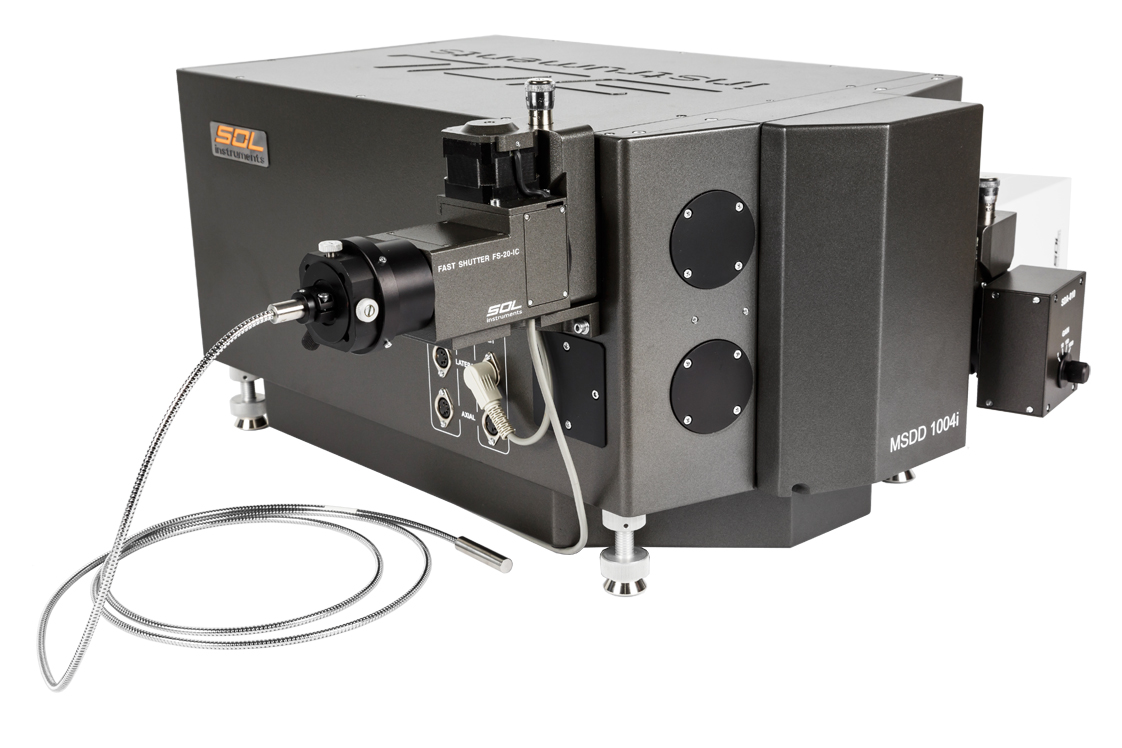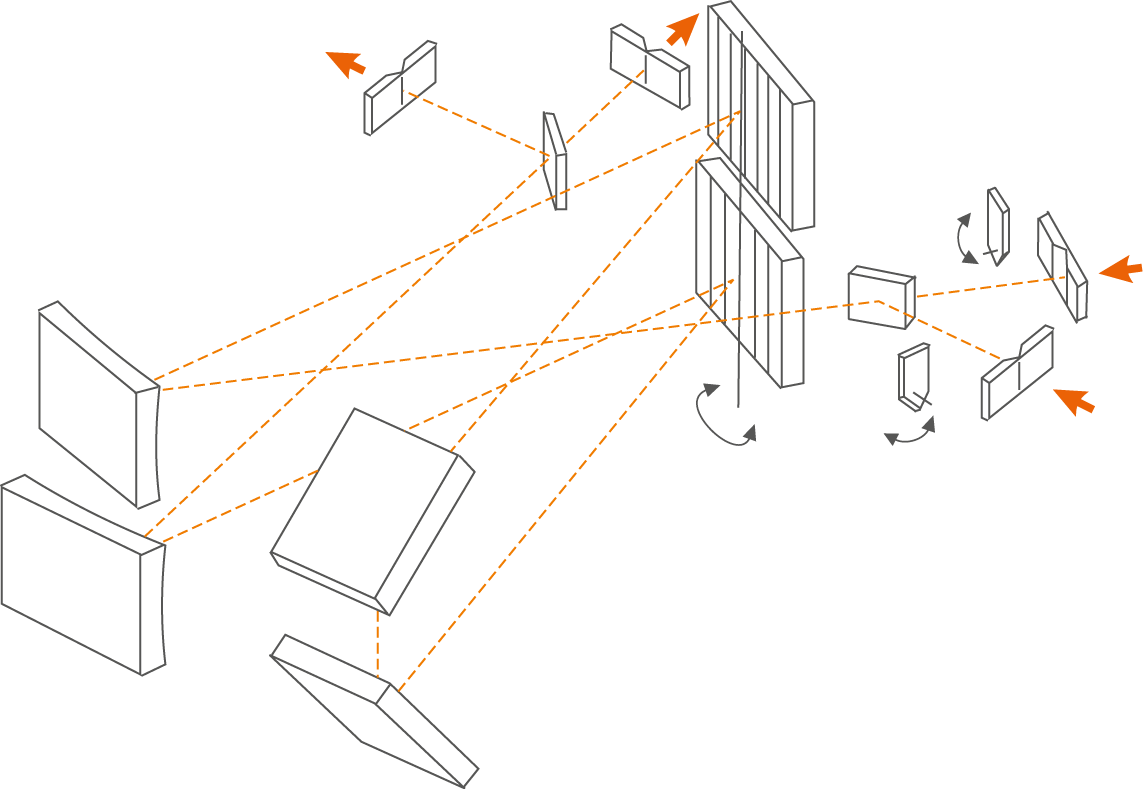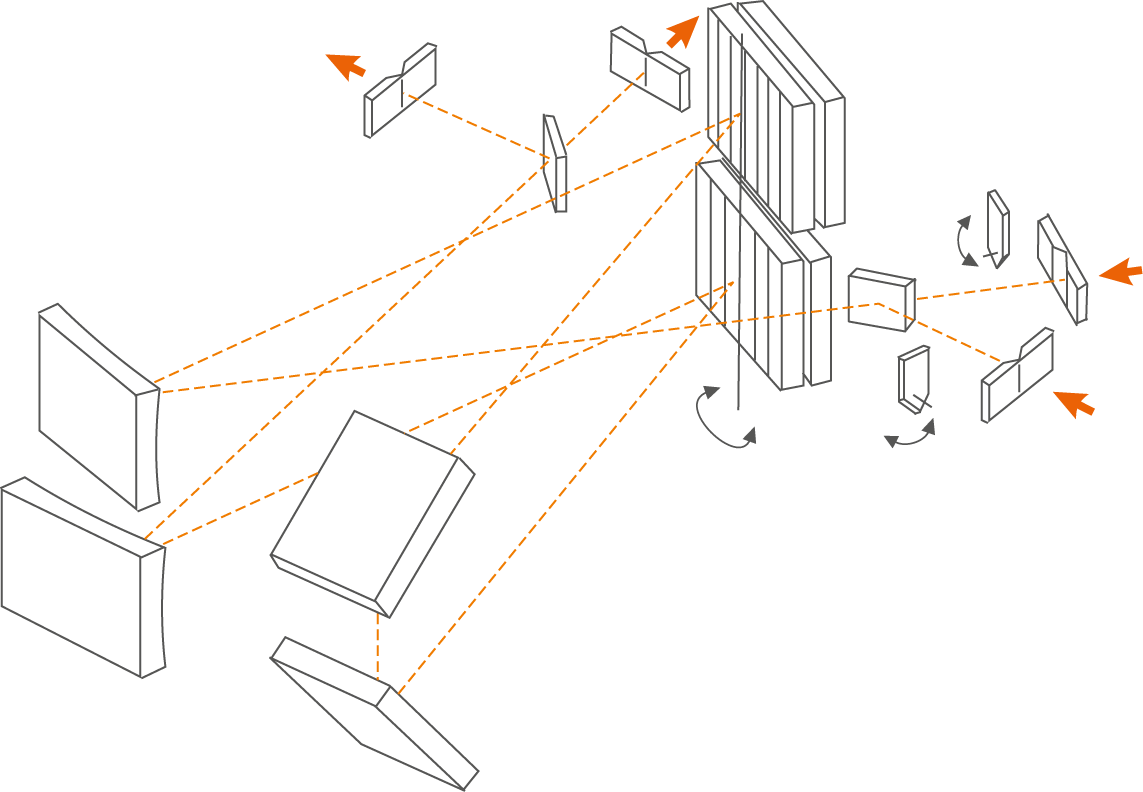|
MSDD1000 series Monochromator–spectrograph is a double dispersion monochromator-spectrograph with the effective focal length of 1 m. Double scheme combines a high spectral resolution which is peculiar to long-focus instruments, extremely low stray light being the advantage of double schemes and small sizes of single monochromators–spectrographs. MSDD1000 series Monochromator–spectrograph is a completely automated spectral instrument with the effective focal length of 1000 mm (2х500 mm) and F\number of 1/5.9, which is applicable as a monochromator or a spectrograph with a large flat field. The MSDD1000 series is designed on the modified Cherny-Turner scheme with the two-level arrangement of optical components to allow dispersion doubling, aberrations minimization and exclusion of spectra re-entrance from the diffraction gratings and mirrors. This is a double dispersion monochromator with no intermediate slit, in which upper and lower levels are the separate monochromators. These two levels are connected by means of two plane turning mirrors. High-quality optics and a wide choice of diffraction gratings provide operation of the MSDD1000 series monochromator-spectrograph in a wide spectral range from 185 nm up to 60 µm (depending on the selected grating) with the best spectral resolution. In MSDD1002i model and MSDD1004i model the astigmatism is corrected owing to special optics what makes these instruments applicable in multi-channel spectroscopy. ONLY one input port is used in these instruments. MSDD1000 series Monochromator–spectrograph has two input (only the models with no astigmatism compensation - MSDD1002 model and MSDD1004 model) ports and two output ports. Selection of the output ports is realized with flip mirrors. Either exit spectral slits or multi-channel detectors can be established in each of the output ports. MSDD1000 series Monochromator–spectrograph has two types of entrance and exit spectral slits: manual, operated with a micrometer screw, and automated (combined) when the slit width is operated automatically or manually (with micrometer). A wide choice of changeable gratings gives the best combination of high energetic efficiency and maximal spectral resolution for different spectrum areas. We also propose a great choice of additional accessories for MSDD1000 series monochromator–spectrograph: filter wheel (6 and 8 filters), fast shutters with the opportunity of radiation direct delivery or via optical fiber, optical fibers with adapters, input and output condensers, integral and multi-element detectors and etc. Extremely high spatial resolution (better than 0,004 nm for 3600l/mm grating) in combination with high throughput (F/number 1/5.9) make double dispersion monochromator–spectrographs of MSDD1000 series an ideal instrument for spectroscopy applications requiring high resolution in the limited area, when other instruments can not be physically applied. |
Automated turret for two pairs of gratings (MSDD1004 model and MSDD1004i model) provides a fast switching of gratings with high repeatability of the set wavelength.
In MSDD1002 model and MSDD1002i model a fixed holder is used for easy manual switching of gratings. |
Monochromator-spectrograph MSDD1000 series, models
-
MSDD1002 MSDD1002i MSDD1004i MSDD1004i Diffraction unit Single-position holder for manually changeable gratings Single-position holder for manually changeable gratings Four–grating turret Four–grating turret Optics Standard Astigmatism–compensated (Imaging) Standard Astigmatism–compensated (Imaging) As well as in all Cherny–Turner scheme–based spectral instruments, in MSDD1000 series monochromator–spectrographs an 00' axis of the diffraction gratings rotation goes through the center of grating operating surface and coincides with the direction of lines. This fact provides the stability of the geometry of the beams for formation of a plane and fixed flat field. In the instrument with an automated turret, gratings rotation axes M-M1 and N-N1 are arranged perpendicular to the spectrum scanning axis, providing a high repeatability of wavelength setting at replacing of gratings.






